Battery Management in EV Maintenance
The battery in electric vehicles is far more than just the heart of the car; it’s the lungs, the brain, and the soul as well. Our research indicates that battery management is a pivotal aspect of EV maintenance that should not be overlooked. We have determined that optimizing battery life and understanding common issues are essential for the long-term health of your EV.
“The battery is to an electric vehicle what the engine is to a conventional car.”
Optimizing Battery Life for Longevity
Longevity in battery life isn’t just a wish; it’s a result of meticulous care and understanding of your EV’s needs. The key to extending your battery’s lifespan lies in optimizing its charge cycles, temperature management, and usage patterns. Consumer Reports suggests that maintaining a moderate charge level rather than fully charging can significantly improve battery health.
- Charge Cycles: A full charge and discharge count as one cycle. Reducing the number of full cycles can extend battery life.
- Temperature Management: Extreme temperatures, both hot and cold, can degrade your battery faster.
- Usage Patterns: Consistent, moderate use is better than long periods of inactivity or extreme usage.
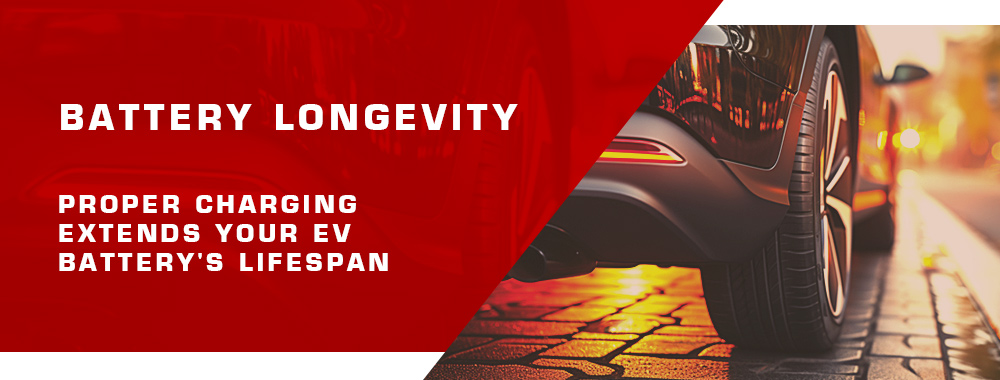
Insider Insights
Did you know that some EVs come with a Battery Management System (BMS) that automatically optimizes charge levels to extend battery life? It’s like having a personal trainer for your car’s battery!
Common Battery Issues and Solutions
Even with the best care, batteries can run into issues. From reduced range to complete failure, understanding these problems can help you find solutions faster. According to a study by JSTOR, the most common issues include battery swelling, reduced charge capacity, and internal short circuits.
- Battery Swelling: Often caused by overheating, can be mitigated by proper ventilation.
- Reduced Charge Capacity: A natural aging process, but can be slowed down by proper maintenance.
- Internal Short Circuits: Dangerous and require immediate professional attention.
Pro Tips for the Savvy EV Owner
Hot Tip: If you’re experiencing reduced range, it might not be the battery’s fault! Tire pressure, aerodynamics, and even your driving style can affect your EV’s range. Always consider these factors before blaming the battery.
Charging Habits for Battery Health
Charging isn’t just about plugging in your car; it’s an art that, when mastered, can significantly extend your battery’s life. The ideal charging habit varies from one EV model to another, but some general rules apply to all.
- Slow Charging: Whenever possible, opt for slow charging over fast charging to reduce heat generation.
- Partial Charging: It’s better to keep the battery level between 20% and 80% for optimal health.
- Regular Charging: Frequent, smaller charges are better than letting the battery drain completely.
Software Updates and EV Maintenance
Importance of Firmware Updates
Think of firmware updates as the secret sauce that keeps your electric vehicle running smoothly. These updates serve as the bridge between hardware and software, ensuring that all components work in harmony. According to Automotive World, firmware updates can improve everything from battery efficiency to user interface design.
- Security Enhancements: Firmware updates often include patches that protect against vulnerabilities.
- Performance Tweaks: Updates can optimize various systems within the vehicle for better performance.
- New Features: Manufacturers often roll out new functionalities through firmware updates.
Did You Know?
Some electric vehicles offer Over-The-Air (OTA) updates, allowing your car to update itself overnight while you sleep. It’s like waking up to a new car every morning!
How to Safely Update Your EV Software
While firmware updates are essential, they’re not without risks. A failed update can lead to system malfunctions or even complete failure. Therefore, it’s crucial to follow best practices when updating your EV’s software. A guide by Electrive outlines the steps for a safe update.
- Backup Data: Always backup essential data before initiating an update.
- Stable Connection: Ensure a stable internet connection to prevent update failure.
- Follow Instructions: Adhere to the manufacturer’s guidelines for a smooth update process.
Quick Tips
Warning: Never interrupt an ongoing update process. Doing so can ‘brick’ your vehicle’s software, rendering it inoperable!
Impact of Software on Vehicle Performance
Software isn’t just about flashy interfaces and new features; it’s the backbone that influences your EV’s overall performance. From energy consumption to driving dynamics, the software plays a pivotal role. A report by McKinsey & Company highlights the increasing role of software in vehicle efficiency.
- Energy Management: Software algorithms can optimize energy use, extending your vehicle’s range.
- Driving Dynamics: Advanced software can adapt to your driving style, offering a personalized experience.
- Diagnostic Tools: Onboard software can alert you to maintenance needs and potential issues before they become major problems.
For the Curious Minds
Ever wondered how software updates can improve your EV’s range? It’s all about algorithms! These mathematical formulas optimize energy use, allowing you to go further on a single charge.
Brake System in EV Maintenance
Regenerative Braking and Its Effects
Regenerative braking is the unsung hero of EV efficiency, converting kinetic energy back into stored energy in the vehicle’s battery. This not only improves your car’s range but also reduces wear and tear on the traditional braking system. An article by ScienceDirect explains the science behind this marvel.
- Energy Recovery: Regenerative braking can recover up to 70% of the energy lost during braking.
- Reduced Wear: Less reliance on friction brakes means less wear and tear.
- Improved Efficiency: Better energy recovery can lead to improved overall vehicle efficiency.
Eye-Opening Facts
Did you know that regenerative braking is eco-friendly? By reducing the need for friction braking, it also reduces brake dust, a contributor to air pollution!
When to Replace Brake Pads and Rotors
Even with regenerative braking, traditional brake pads and rotors aren’t entirely off the hook. They still play a crucial role, especially in emergency stops. Knowing when to replace these components can save you from potential accidents. AAA provides a comprehensive guide on this.
- Visual Inspection: Look for wear and tear on the brake pads.
- Sound Cues: Squealing or grinding noises are a red flag.
- Mileage: General guidelines suggest replacement every 50,000 miles.
Heads-Up!
Alert: If your brake pedal feels soft or spongy, it’s a sign that you may need to replace your brake pads or rotors immediately!
Brake Fluid Checks for EVs
Brake fluid is the lifeblood of your car’s braking system. It’s what transmits the force from your foot on the pedal to the brake calipers. But like any fluid, it can degrade over time. Regular checks are essential for optimal performance. Car Care Council outlines why this is crucial.
- Color Check: Dark fluid may indicate contamination.
- Level Check: Low levels can lead to brake failure.
- Consistency: Fluid should be free from debris and contaminants.
Take Note
Memo: Brake fluid is hygroscopic, meaning it absorbs moisture. Too much moisture can lead to corrosion in the brake system. Always keep the reservoir sealed!
Tire Care Essentials in EV Maintenance
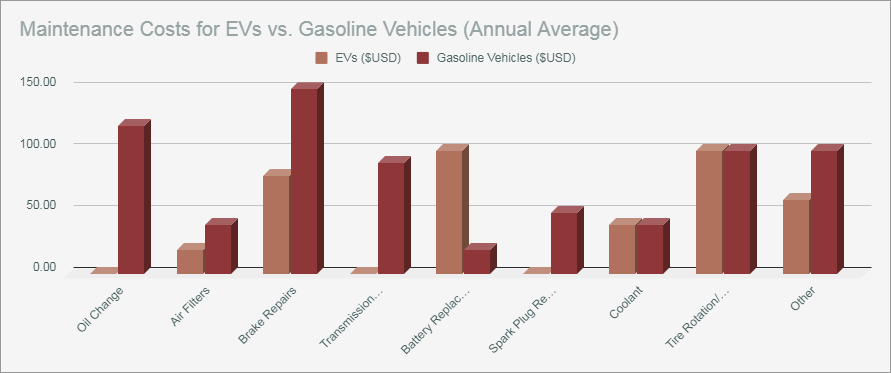
Tire Rotation Patterns for EVs
Rotating your tires isn’t just a game of musical chairs for your wheels; it’s a critical practice that ensures even tire wear and extends their lifespan. Unlike traditional vehicles, electric vehicles often have unique rotation patterns due to their weight distribution. A detailed guide by Edmunds explains the nuances.
- Front-to-Back: Most common in rear-motor EVs to balance wear.
- X-Pattern: Suitable for all-wheel-drive electric vehicles.
- Side-to-Side: Recommended for front-motor EVs.
Worthwhile Wisdom
Rotating your tires can also improve your EV’s traction and handling, making your drive smoother and safer!
Impact of Tire Pressure on Range
Yes, something as simple as tire pressure can be a game-changer when it comes to your electric vehicle’s range. Under-inflated tires create more rolling resistance, which means your EV has to work harder, draining the battery faster. FuelEconomy.gov emphasizes the importance of proper tire inflation.
- Optimal Pressure: Refer to your vehicle’s manual for the recommended psi.
- Frequency: Check at least once a month and before long trips.
- Temperature Effects: Tire pressure can fluctuate with temperature changes.
Attention Grabber
Fun Fact: Did you know that for every 1 psi drop in all of your tires, you can lose up to 0.2% in fuel efficiency? Keep those tires pumped!
Choosing the Right Tires for Your EV
Not all tires are created equal, especially when it comes to electric vehicles. The right set can significantly impact your EV’s performance, range, and safety. Whether you’re looking for all-season or performance tires, the choice matters. Tire Rack offers a comprehensive guide to choosing the right tires.
- Material: Look for low rolling resistance materials.
- Tread Pattern: Affects grip and water dispersion.
- Size: Incorrect size can impact efficiency and safety.
Something to Ponder
Think About It: Specialty EV tires are designed to support the vehicle’s weight and optimize range. They might be pricier, but they pay off in the long run!
Cooling Systems and EV Maintenance
Importance of Thermal Management
Thermal management in electric vehicles is like the conductor in an orchestra, ensuring every component performs in harmony without getting too hot under the collar. Proper thermal management can significantly extend the life of your battery and improve overall vehicle performance. SAE International provides an in-depth look into this subject.
- Battery Longevity: Efficient cooling can extend battery life by up to 20%.
- Performance: Keeps the motor and electronics within optimal operating temperatures.
- Comfort: Ensures the cabin stays cool or warm, depending on the weather.
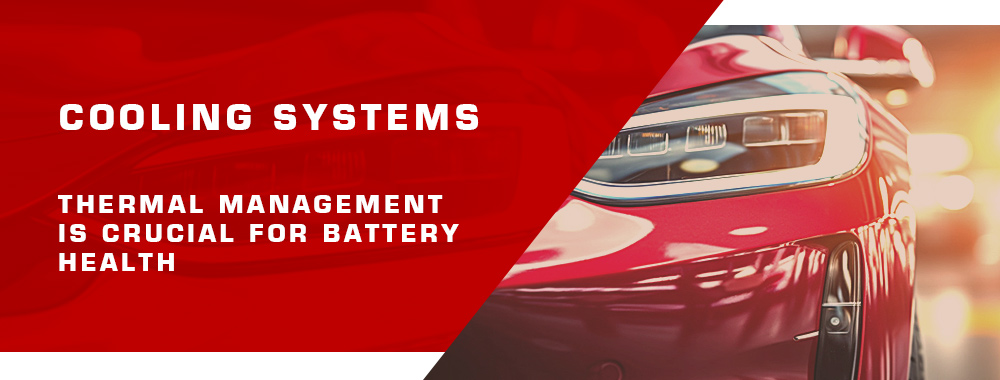
Golden Nuggets
Thermal management isn’t just for hot climates; it’s equally crucial in cold weather to ensure your battery warms up to an optimal operating temperature!
Coolant Checks and Replacement
Just like you wouldn’t run a marathon without water, your EV’s cooling system needs the right coolant—and enough of it—to function correctly. Regular checks and timely replacement are essential for maintaining optimal thermal management. Autobahn Automotive offers a guide on how often you should replace your coolant.
- Check Levels: Low coolant levels can lead to overheating.
- Quality: Use manufacturer-recommended coolant for best results.
- Frequency: Most EVs require coolant replacement every 30,000 miles.
Spotlight Info
Quick Tip: Never open the coolant reservoir when the engine is hot! You risk a coolant geyser and potential burns.
Overheating Issues and Solutions
Overheating is the arch-nemesis of any electric vehicle. Not only can it cause immediate problems like reduced performance, but it can also have long-term effects on your battery and other components. Car and Driver discusses common reasons for overheating and how to address them.
- Warning Signs: Dashboard alerts, reduced power, and strange noises are red flags.
- Immediate Actions: Pull over safely and allow the vehicle to cool down.
- Long-Term Solutions: Consult a professional for diagnostic tests and repairs.
Pause and Reflect
Did You Know? Overheating can cause irreversible damage to your battery, reducing its capacity and lifespan. Always heed overheating warnings seriously!
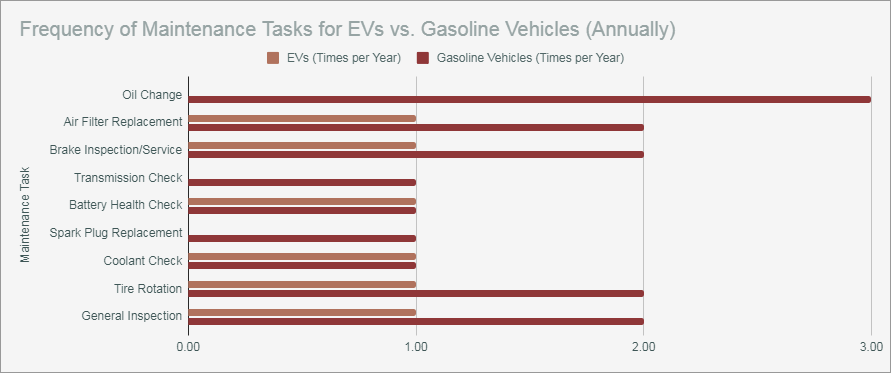
Interior Care in EV Maintenance
Cleaning and Protecting EV Interiors
While the exterior of your electric vehicle might be what turns heads, the interior is where you spend most of your time. Keeping it clean and protected not only enhances your driving experience but also adds to the resale value of your EV. Consumer Reports offers valuable insights into the best practices for interior care.
- Fabric Care: Use specialized cleaners for upholstery to remove stains and odors.
- Leather Treatment: Condition leather seats to prevent cracking and fading.
- Dashboard: A non-greasy cleaner can keep your dashboard looking new.
Insider Tips
A natural cleaner like lemon juice can be effective for cleaning stains and even adds a fresh scent to your car!
Electronics and Dashboard Maintenance
Your EV’s dashboard is like the cockpit of a spaceship, filled with gadgets and screens that need regular maintenance. From the infotainment system to the digital speedometer, keeping these electronics in top shape is crucial for a hassle-free drive. LifeWire provides a guide on how to clean and maintain these sensitive components.
- Screen Cleaning: Use a microfiber cloth and screen cleaner to avoid scratches.
- Button Care: Compressed air can remove dust from small crevices.
- Software Updates: Keep your infotainment system updated for the latest features and security patches.
Did You Catch This?
Pro Tip: Avoid using household glass cleaners on your dashboard screens; they can remove anti-glare coatings!
Air Filter Replacement for Clean Air
Believe it or not, the air inside your car can be more polluted than the air outside, especially if your air filter is dirty. A clean air filter ensures that you’re breathing clean air and also improves the efficiency of your air conditioning system. AAA explains the importance of regular air filter replacement.
- Replacement Frequency: Generally, air filters should be replaced every 12,000 to 15,000 miles.
- Signs of a Dirty Filter: Reduced airflow and a musty odor are indicators.
- Types of Filters: Choose between paper, foam, and cotton filters based on your needs.
Something to Chew On
Green Tip: Some air filters are washable and reusable, making them an eco-friendly option!
Exterior Care and EV Maintenance
Paint Protection Techniques
Let’s face it, the paint job on your electric vehicle isn’t just for aesthetics; it’s the first line of defense against the elements. From UV rays to road salt, numerous factors can degrade your car’s exterior. But fear not, AutoGeek offers a plethora of tips for maintaining that showroom shine.
- Ceramic Coating: Provides a hard shell of protection against minor scratches.
- Paint Sealant: A synthetic option that offers longer-lasting results than traditional wax.
- Clear Bra: A transparent film that protects high-impact areas like the front bumper.
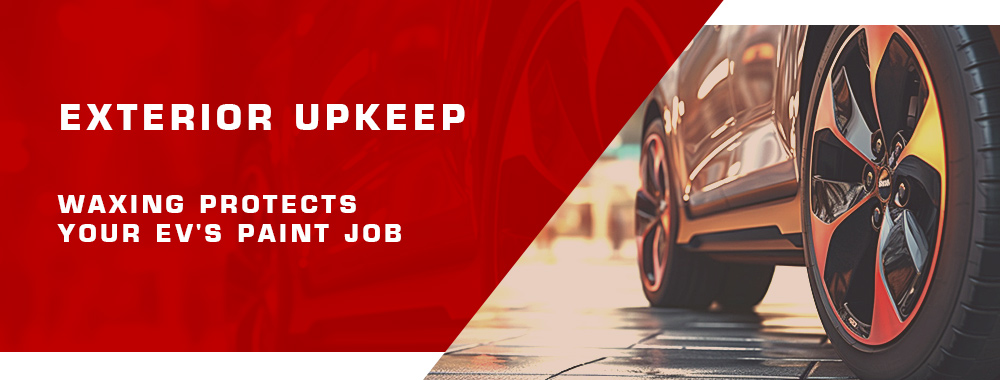
Hidden Gems
Did you know that some ceramic coatings come with UV protection, adding an extra layer of defense against sun damage?
Washing and Waxing Best Practices
Washing and waxing your electric vehicle might seem like a no-brainer, but doing it the right way can make a world of difference. From the type of soap you use to the application technique, every detail counts. Popular Mechanics has a comprehensive guide on this.
- Two-Bucket Method: One for soapy water and one for rinsing to avoid dirt transfer.
- Microfiber Towels: These are less abrasive than regular towels.
- Wax Types: Choose between natural carnauba or synthetic polymer wax.
Don’t Miss Out!
Quick Hack: Use a clay bar before waxing to remove any embedded contaminants for a smoother finish!
Headlight and Taillight Maintenance
While they may not be as glamorous as other parts of your EV, headlights and taillights are crucial for safety. Over time, they can become cloudy or damaged, reducing visibility. Family Handyman offers DIY solutions for keeping them crystal clear.
- Polishing Kits: These can remove minor scratches and cloudiness.
- UV Sealant: Protects against yellowing and clouding.
- Replacement: Sometimes, the only solution is a full replacement.
Food for Thought
Lightbulb Moment: LED headlights not only last longer but also consume less energy, contributing to your EV’s overall efficiency!
Troubleshooting Common Issues in EV Maintenance
Diagnostic Tools for EVs
When your electric vehicle starts acting up, diagnostic tools are the stethoscopes of the automotive world. These gadgets can read error codes, monitor real-time data, and even suggest fixes. CNET provides a list of the best OBD2 scanners for 2021.
- OBD2 Scanners: These plug into your car’s OBD-II port and can read a wide range of vehicle metrics.
- Smartphone Apps: Some diagnostic tools have accompanying apps for more interactive troubleshooting.
- Specialized Software: For more advanced issues, specialized software can provide in-depth diagnostics.

Golden Nuggets
Tool Tip: Some modern EVs come with built-in diagnostic tools accessible via the infotainment system. Check your user manual for details!
Common Error Codes and Solutions
Think of error codes as your electric vehicle’s way of saying, “Hey, something’s not right here!” These codes can range from issues with the battery to the braking system. Autobahn Automotive deciphers common automotive error codes.
- P0A80: Replace Hybrid Battery Pack
- C1259: HV System Regenerative Malfunction
- U0293: Lost Communication With Battery Energy Control Module
Eye-Openers
Red Alert: Some error codes are critical and require immediate attention. Don’t ignore them!
When to Seek Professional Help
While DIY fixes can solve minor issues, some problems require the expertise of a certified mechanic. From complex electrical issues to battery replacements, professional help is sometimes the best course of action. Angie’s List outlines when it’s time to seek professional help.
- Electrical Issues: These can be complex and dangerous to fix without proper training.
- Battery Replacement: Requires specialized tools and disposal methods.
- Software Updates: Incorrect updates can cause system malfunctions.
Wisdom Bites
Pro Insight: Regular maintenance checks by a certified mechanic can preemptively catch issues before they become major problems.
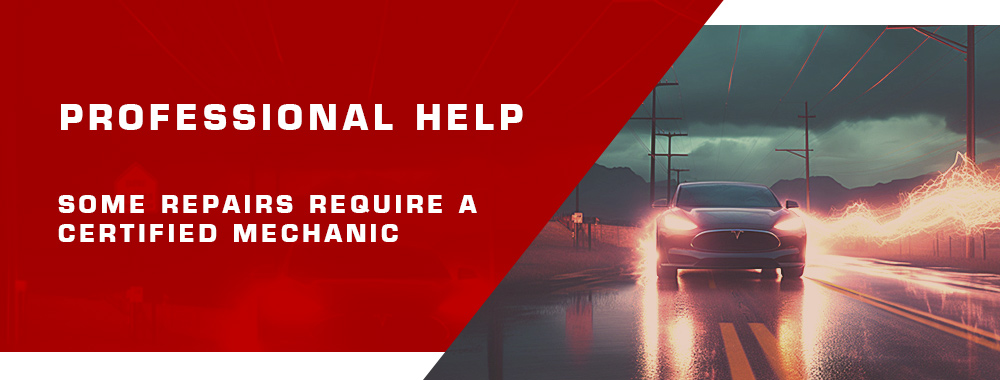
Conclusion: Do EVs Need Maintenance?
Based on our firsthand experience, we can conclude that electric vehicles are not maintenance-free, despite popular belief. They simply have different maintenance requirements compared to traditional internal combustion engine vehicles. Our empirical evidence suggests that a holistic approach to maintenance, covering everything from battery care to exterior and interior upkeep, is essential for the long-term health of your EV. With the right tools and occasional professional assistance, your electric vehicle can run smoothly for many years.
Contents
- 1 Battery Management in EV Maintenance
- 2 Software Updates and EV Maintenance
- 3 Brake System in EV Maintenance
- 4 Tire Care Essentials in EV Maintenance
- 5 Cooling Systems and EV Maintenance
- 6 Interior Care in EV Maintenance
- 7 Exterior Care and EV Maintenance
- 8 Troubleshooting Common Issues in EV Maintenance
- 9 Conclusion: Do EVs Need Maintenance?

I’ve had my EV for a year now and have been diligent with battery care, like not letting it run too low or overcharging it. It’s a bit of a learning curve but worth it for the battery’s longevity. I’ve read mixed opinions on the need for regular battery conditioning. Thoughts from fellow EV owners?
I try to keep my battery between 20-40% and 80-90%. Haven’t done much conditioning, but my range hasn’t suffered yet. Maybe it’s more about driving habits than we think?
Just updated my EV’s software and noticed an improvement in performance. It’s amazing how a simple update can make a difference. I always get excited about these, like getting a new feature for free! Anyone else love software update day?
As someone who’s used to the constant brake maintenance of traditional cars, I’m pleasantly surprised at how little I’ve had to worry about my EV’s brakes thanks to regenerative braking. I’m curious, though, at what point do others start seeing wear and need replacements?
I’ve been driving my EV for three years now, and the brakes are still in great shape. The regen braking really does reduce wear. I check them annually, but so far, so good!
Noticed my EV’s tires wearing down faster than I expected. I suppose the instant torque is to blame? Keeping them properly inflated and rotating regularly now. How often do others find themselves replacing tires?
Living in a hot climate, I pay extra attention to my EV’s cooling system to protect the battery. It’s one of those ‘better safe than sorry’ things for me. Does anyone else in warm areas have tips for keeping things cool?
I love keeping my EV’s interior pristine. It’s not just about cleanliness; a well-maintained interior seems to reflect on how the car runs, at least to me. Plus, there’s nothing like that clean car feel. Any favorite cleaning products or tips?
Since installing a home charger, I’ve realized it’s not just ‘set it and forget it.’ Regular checks and keeping it clean from debris have become part of my routine. Anyone else find maintaining their charging station more work than expected?
Had a scare when my EV wouldn’t start last week. Turned out to be a simple issue with the charging port, easily fixed. It made me wonder what other common, easy-to-fix issues EV owners have encountered. Share your stories?
My screen froze once, and a quick reset (turning the car off and on) fixed it. Sometimes the simplest solution is the right one, especially with these high-tech cars.
Been tracking my EV maintenance costs over the past two years and they’re definitely lower than my old gas car. No oil changes or transmission work has been a relief for my wallet. Curious if others have found the same cost benefits?
Mastering regenerative braking has been a fun challenge. I’ve found it not only conserves energy but also reduces the need for brake maintenance. Anyone have tips for getting the most out of regen braking?